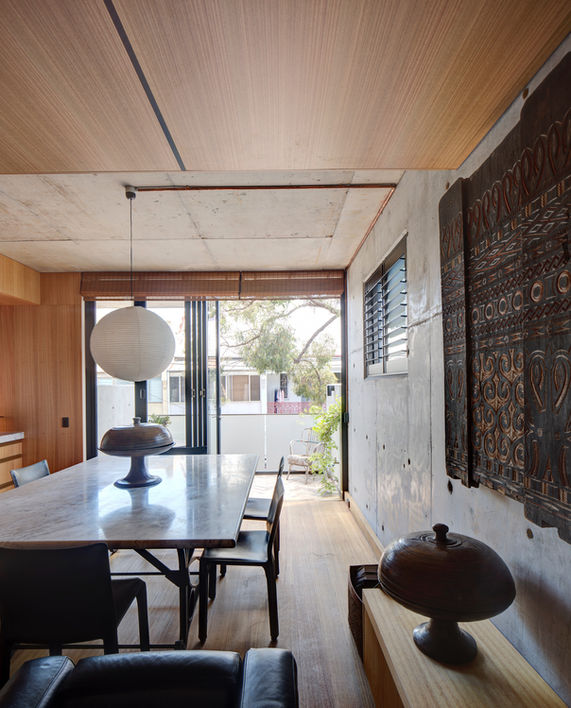About our aspirations
Glyde_Bautovich are architects, urban designers and planners who work together and separately to transform resources, regulations, programs, and ideas into places of beauty.
We believe in the ‘spirit of place’ or genius loci and passionately engage in the art of making meaningful places of distinctive character through a careful process.
We research and analyse client aspirations, economics, demographics, urban structure, history, building typologies and appropriate precedents.
We re-use and revisit these layers that are beneath the surface to inform an appropriate outcome.
The place becomes a palimpsest set within its context.
The experience of the public space, what makes the city or place stick together, becomes rich, activated and vital.
Our analysis feeds into the architectural process which becomes form driven whereby we mould the fabric of the building to engage with nature, capture light and air, in a way that we know will lead to joyful inhabitation.
We breath in information, aspirations and breath out a new space or building as an offering to the people of the city and those who occupy them.
About our aspirations
Glyde_Bautovich are architects, urban designers and planners who work together and separately to transform resources, regulations, programs, and ideas into places of beauty.
We believe in the ‘spirit of place’ or genius loci and passionately engage in the art of making meaningful places of distinctive character through a careful process.
We research and analyse client aspirations, economics, demographics, urban structure, history, building typologies and appropriate precedents.
We re-use and revisit these layers that are beneath the surface to inform an appropriate outcome.
The place becomes a palimpsest set within its context.
The experience of the public space, what makes the city or place stick together, becomes rich, activated and vital.
Our analysis feeds into the architectural process which becomes form driven whereby we mould the fabric of the building to engage with nature, capture light and air, in a way that we know will lead to joyful inhabitation.
We breath in information, aspirations and breath out a new space or building as an offering to the people of the city and those who occupy them.

Darlington Brickworks Apartments
Abercrombie Street, Darlington
The primary concept for this multi-residential project is to create a sense of place using a terrace form typology reflective of it’s context.
The council controls allowed for two storeys for the area. An interpretation of ‘storey’ within council’s controls allowed for an attic form that presents to the streets as a roofing element and essentially provides for a third level to the building.
Deep internal fissures were cut into the building perpendicular to the street frontages to increase the surface area of light and ventilation into each dwelling. Typically apartment buildings have private open space located on street edges with privacy often compromised. Our design layers private open space deeper into the building form reducing the fish bowl effect and minimising anonymous façadism. The lack of dependancy on windows to the street allowed us to be more confident in using solidity and materiality.
Each street frontage has been carefully broken down and eroded to produce a fine urban scale commensurate with the human body. Landscape helps fill in the gaps.
Internal corridors have been designed like external streets.
Usually internal corridors are utilitarian and treated as low grade space. In the building corridors have been treated like an extension of the local streets, a celebration of its urban environment. The common location of the main lobby entries and vertical circulation allow a landscaped ‘mid block’ link to occur between both Abercrombie and Lander Streets and provide permeability within the street block.Subtly faceted steel and folded concrete further reinforced these entries at street level.
External materials have been used as internal materials.
The use of unpainted materials to internal lobby areas such as fibre cement sheet and Corten steel walls, plywood ceilings, brick paving to the floors and natural light is in contrast to the dingy ‘motel lobby effect’ and gives these semi public spaces a sense of place. The upper level corridors have skylights and glass brick walls to allow winter sun to penetrate deep into the building.
The predominant materials of off form concrete and rusted steel are materials that reflect both the heritage of Darlington and its immediate context. An example of this, is the rear entrance to Sydney University at the end of Lander Street where Corten steel is used as a screening element. Our decision to use Corten steel as cladding provided another opportunity for our building to connect within its context.
All the markings used in the construction of the building have been preserved such as pencil set out lines for cladding, spray paint markings on concrete, even mistakes made during construction are not deliberately covered over or hidden. Rather they are left as scars commemorating the human condition.















































